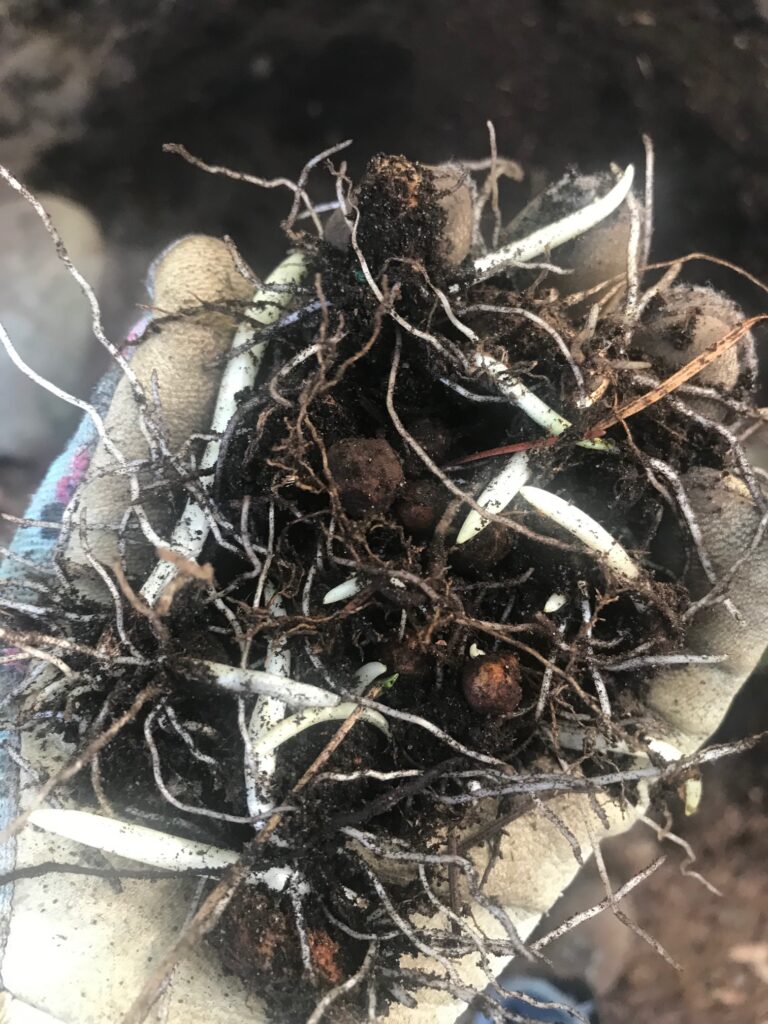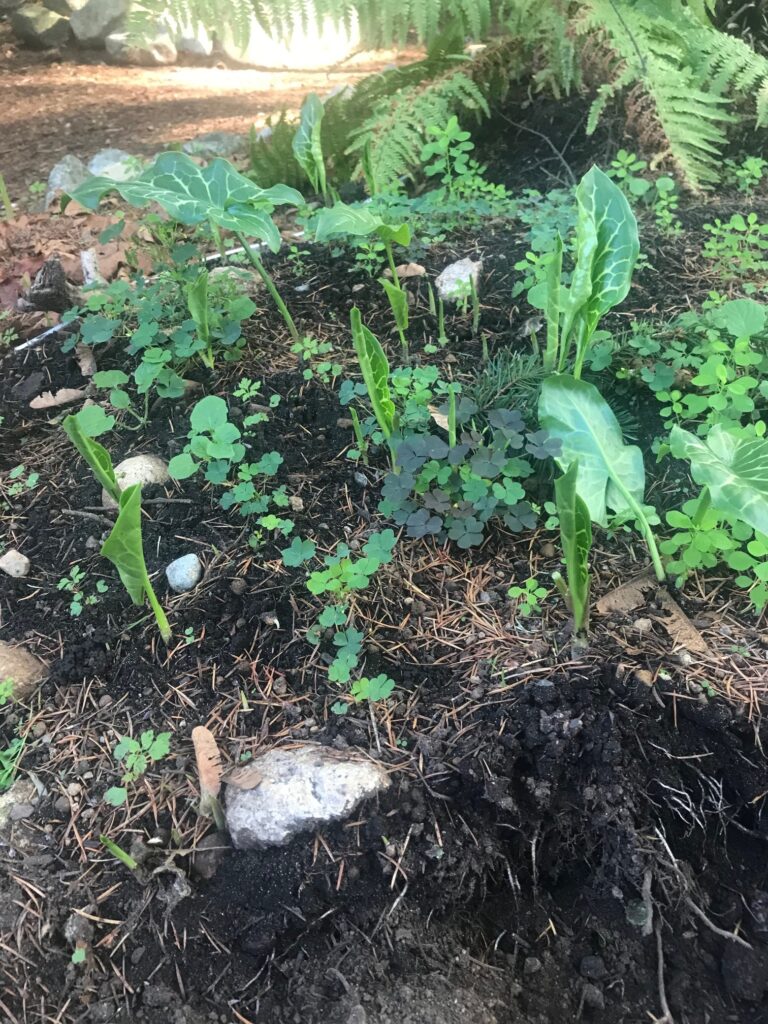Stewarding the Champlain Heights Trail over the past year, I have had the opportunity of tackling an assortment of pernicious invasive weeds – Himalayan Blackberry (with its giant root balls and prickly branches, Ivy (with its tendency to form dense mats over the forest floor), and Daphne Spurge Laurel (with its caustic sap and poisonous berries). But, I would have to say one of the most formidable invasives I have ever tackled has been Italian Arum (Arum italicum).
Italian Arum looks at first to be diminutive and benign. It is a herbaceous perennial with arrowhead-shape leaves appearing in fall an winter and dying back in the summer. Veins may be cream or silver-colored. It is often sold in stores with the spring bulbs. People tend to buy Italian Arum, as it grows well in shade and remains green throughout the winter. However, Italian Arum spreads prolifically, both sexually with seed and vegetatively (an asexual form of propagation) through tubers. Within a few years, if left unchecked, a gardener will come to find their garden overwhelmed with Italian Arum plants. What is more, Arum’s orange-red berries, which grow in clusters in the summer, are toxic to humans and dogs. But birds can feed on the berries, which leads to Italian Arum spreading easily within nearby forested areas.
Digging under a leaf of Italian Arum, you will find the stem leads down to a bulb or tuber. In the soil surrounding this single bulb you will find handfuls of other bulbs varying in size, some resembling tiny pebbles to others that are as large as 3″ in size. Trying to sift through the soil to locate all the bulbs is an exercise in futility. You may spend an hour meticulously sifting through the soil, thinking you must have found them all, only to spot another, and another… Finally, you realize the futility of it all and you must remove all infested soil and dispose of it and replace with new soil.
Italian Arum, the most formidable of invasives.


